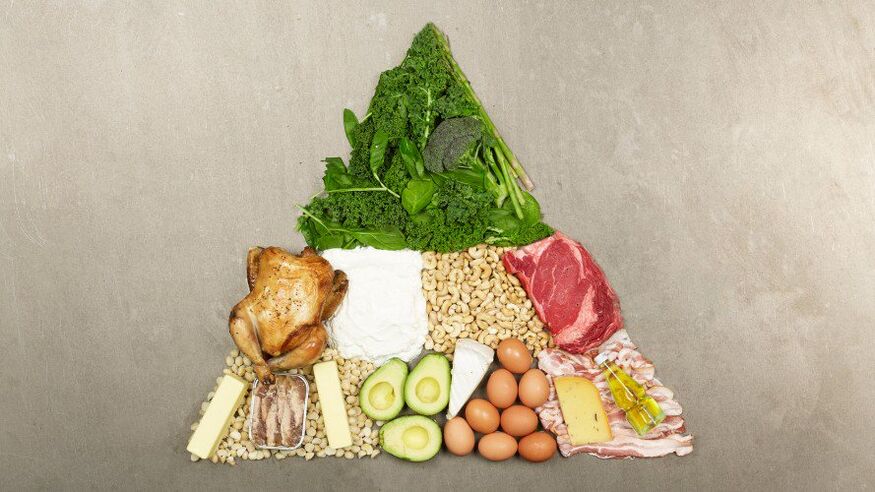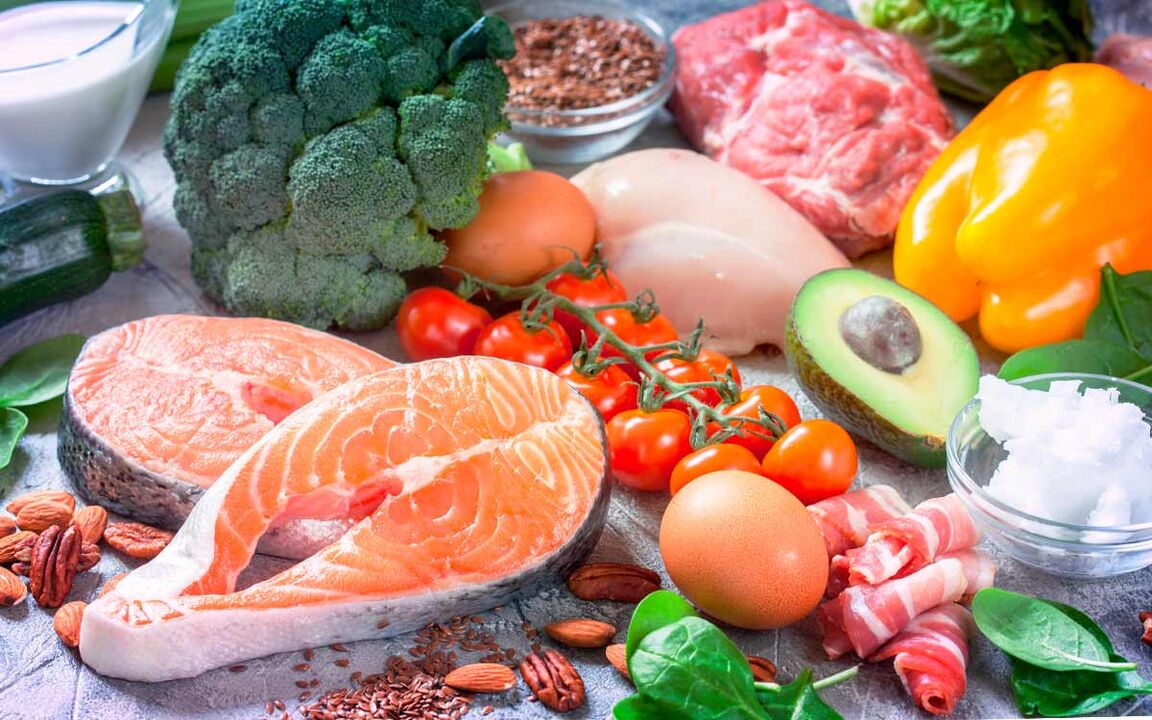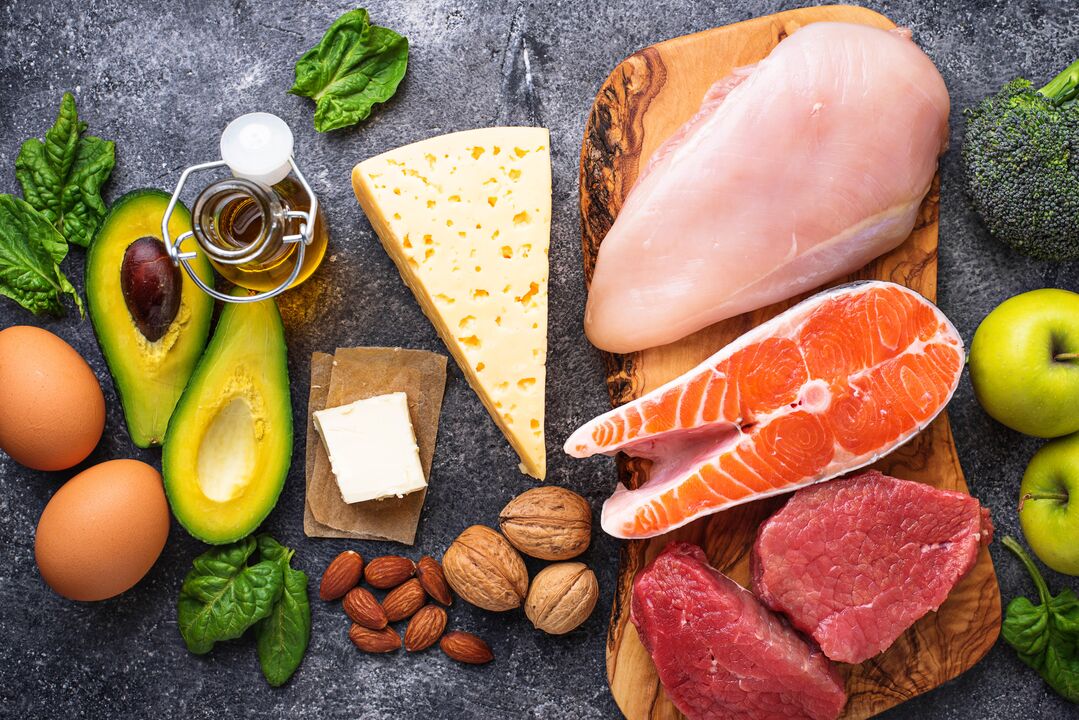This article analyzes the nutrition principle, which is called "ketogenic diet" (or "keto diet"), based on medical data analysis. The method is tested in volunteers and a large mass is provided. The article does not describe the entire system, however, the general principle is established with the justification of each step, which is more important for independent consciousness and adjustment to its abilities, time, health status, etc. Recently, a harmless diet has become generalized in the world (it is briefly, keto diet). Its essence is to almost completely exclude diet carbohydrates.

The fact is that with the lack of glucose obtained from the carbohydrate division, the body needs to change to another source of energy. It is ready for this in advance, because fat is the main source of energy, saved in a "rainy day. "Carbohydrates are the main standard energy source that supplies energy, despite the fact that they give less energy in Kcal compared to fats (4kcal/g and 9kcal/g, respectively). Because the body itself considers that they are somewhat small. He did not even foresee the "tan puzzle", unlike stored fats.
What is ketosis?
Our body can receive energy from three main groups of substances: carbohydrates, protein and fat. From the point of view of energy value, fats (8-9. 7 kcal/g-here and then mean the energy value of "pure" substances, that is, without the accompanying ballast) they have the greatest energy potential. Carbohydrates and proteins are less rich in energy (approximately 4 kcal/g).
If it limits the flow of carbohydrates at a certain level, the body begins to use fats and proteins to produce the necessary energy. As a result of the metabolism of the fats, the ketone bodies called so are formed.
The formation of ketone bodies, or ketogenesis, is a physiological process, that is, an indispensable part of energy exchange. In the process of this exchange, we obtain the necessary energy.
The dangers of a ketogenic diet
The main danger of a ketogenic diet is to exaggerate. Some people limit themselves in foods that strive for rapid weight loss. This should not afford. You must definitely follow your personal attitudes ("macros") so as not to break your balance. Otherwise, there is the possibility that ketosis enters a state of ketoacidosis, when there are too many ketone bodies in the body. This is a very dangerous condition that threatens a violation of the work of several organs and, first, the liver. With ketosis, there is a self -regulation mechanism, when, with an increase in the number of ketone bodies, the process of its metabolism is "slowed".
But there is a limit in the world, so it must adhere to the established characteristics of the diet. The keto diet is contraindicated in type 1 diabetes (with this type of diabetes, ketosis and ketoacidosis it can develop independently). In addition, the keto diet is not categorically compatible with alcohol consumption. Among other things, it is necessary to avoid situations that can lead to dehydration, this is also dangerous.
How to enter cetosis correctly
The keto diet is not one of the diets you can start and finish whenever you want. The body needs some time to adapt to this diet and enter a state called ketosis. The process generally takes 2 to 7 days and depends on the personal characteristics of the body, the level of physical activity and the type of nutrition. If it is necessary to enter the state of ketosis as quickly as possible, it must spend energy with an empty stomach and limit carbohydrate consumption with 20 grams per day, or even less. In this case, it is necessary to monitor the amount of liquid consumed.
For accelerated entry in a state of ketosis, you can use the method called Fat Post. The fat post implies the consumption of 1000 - 1200 kcal per day, while 80 - 90% of the percentage comes from fat. This can last a very short time, up to a maximum of 5 days (usually 2-3 days), prolonged fat hunger can be dangerous for your health!

Cetosis can be controlled using indicator strips that determine the level of ketone bodies in the urine. Therefore, this indicator can only be considered assistant. Indicator strips can be bought in pharmacies or on the Internet.
How to understand that you are in a state of ketosis
As mentioned above, the simplest and most affordable method (but not at cost! ) To measure the degree of ketosis is to use special stripes (something like Licmus documents that are used to measure the acidity of liquids). There are also more advanced methods to measure the concentration of ketone bodies in the body. Devices that measure the level of ketone bodies in the exhaled air. Of course, they are more expensive than the strips, but they serve much longer and the accuracy of the measurement is much greater. The most accurate measurement method (in domestic conditions) are the devices that measure the level of the ketone bodies in the blood. They act on the similarity of the glucometers of the home that use diabetics to measure blood sugar. These are very precise devices, but, unfortunately, they are not cheap.
If your personal recommendations calculated with our Keto calculator adheres precisely, then you will not have an urgent need for instrumental measurements. It is quite precise to adhere to a diet and evaluate its condition for subjective sensations.
Practical advice
It is impossible to completely exclude carbohydrates: some organs (cortical substance of the kidneys, red blood cells and, most importantly, the brain) use only carbohydrates (more precisely, glucose) as a source of energy). As has already been clarified, the effectiveness of a harmless diet has been demonstrated. What is proposed in the article is a personal variation justified by knowledge and medical analysis, as well as the experience of experimenters. Then, the keto diet is conditionally divided into 3 parts. They have no names, because the division is not standard and is more necessary for understanding. T. K. Each person works or occupied with something else, take a week of conditionally 40 hours with two days off.
Ceto diet: The first period will correspond to two days off (for example, Saturday and Sunday).
Ceto diet - The second period - four working days, for example. (Monday forty).
Ceto diet - The third period, respectively, the remaining day, p. (Friday).
Note the days I assigned are conditional, but they must be followed.
I. The period
In the first two days of the diet, it must exclude food intake, limited to water (tea, coffee without sugar, milk, etc. ). This is necessary to pretend to be glycogen reserves in the body. Normally up to 600 g is contained, of which the main supply in the transversely broken muscles. When starving, this supply is spent in 18-26 hours depending on the load. Unlike a simple ambulance diet, in which these reserves will oxidize gradually together with the fatty fats and proteins in food (even if carbohydrates are neglected, which are still in any product in low quantities), we change to the oxidation of lipids in the shortest possible time.
In classical pathophysiology, this is the first complete hunger period, which lasts 4 to 5 days. During this period, there is an increase in the main exchange, which decreases by 5-6 days to the original level and below. We do not care, because we will stop at the time he, the main exchange, will be the highest. It is very important to know what substances (and in which sequence) use the body during complete hunger.
Based on the determination of the respiratory coefficient (the relationship between the volume of carbon dioxide released from the body to the volume of oxygen absorbed during the same time) and the nitrogen insulation in the urine, the researchers discovered that at the beginning the use of replacement carbohydrates and the respiratory coefficients are approaching 1. However, as already mentioned, as mentioned as the reserves of the carbohydrates in the body. And they are limited to which carbohydrate reserves are mentioned, and are approaching a few days later, and carbohydrate reserves are mentioned, and the days are mentioned. Of full starvation, the complete fasting of the full fast (with water at least 2 liters! ) The reserve fats begin to oxidize in increasing quantities (what we need).
The respiratory ratio for fat oxidation is close to 0. 7. Depending on the amount of spare fat, proteins begin to be used over time (the main reason why, with excessive enthusiasm, it should not be neglected by the advice and justifications presented below, it will only damage this! ). In addition: in this period, you can "clean" the body if you wish, using weak and fees based on abundantly.
II. Period

It is characterized by fat oxidation. Without control, this period lasts to the completely exhausted fat reserves (in the fat deposit it is 100%, in organs in 96-97%). T. K. Fat oxidation occurs in the liver, the negligence of the period of this period (4-8 days) may occur infiltration of liver fat, due to the fact that the liver cannot cope with the amount of fatty acids that need to be oxidized.
During this period, the diet consists of protein foods (fish, meat, eggs, hard cheese, cottage cheese, etc. ) a complete list of foods, allowed diets, etc. You can find on the Internet. It is worth noting that the power is unbalanced and it is recommended to use polyvitamins additionally, as well as fiber in the tablespoon in the morning and night, washed with plenty of water (for the prevention of constipation). In addition: fat is oxidized only by aerobic means, so force training with a small amount of repetition or at the edge of the pulse will not bring a synergistic result, but, most likely, it will lead to deterioration in the well.
III. Period
This is the last part of the circle, characterized by rest for the body, carbohydrate load and rest. It is necessary not to overload the body. First, this main exchange does not decrease, but constantly remains at a high level (first due to the oxidation of glycogen reserves, then the transition to the oxidation of lipids and finally, with the carbohydrate load, the body returns to its original position).
Secondly, then we give the rest of the liver. The keto diet is something wonderful, but you need to know the measure in everything. The carbohydrate load is the use of "slow carbohydrates" of SO - polysaccharides. Products that do not give a strong increase in glucose in blood plasma (blood sugar). This is, for example. Brown rice, tough varieties paste, porridge, etc. (You can see more on the Internet).
Low carbohydrate dishes recipes
When making the decision to sit in a keto, a diet that guarantees a feeling of satiety and rapid results in losing weight, many, however, face the problem of cooking, because several family products are now prohibited. In particular, how to be customary people every day for lunch of the soup if one of the main ingredients of the first dishes, the potatoes, is it a taboo? The keto diet faces this small problem. In this article, we offer recipes for the most popular and loved throughout the childhood of soups adapted to the low -cost energy system. Each recipe contains a detailed calculation of the amount of carbohydrates, which will allow you to modify or complement the ingredients to your liking if you wish.
Pope cake
Ingredients:

- ADYGEA Cheese - 200 gr. (Carbohydrates - 0)
- Cream oil - 50 gr. (0. 7)
- Cocoa powder-3 teaspoons (1. 5)
- Vanilin - 1 Bag (0)
- Sugar -substituter - 15 tablets (0)
Number of carbohydrates per plate: 2. 2
Preparation:
- Put the butter for 2-3 hours in the freezer.
- Grate cheese and oil in a thick grater.
- Dissolve the succribor in 1 tablespoon of water
- Add subcrotator and vanillina to the mass of oil cheese. Mix well.
- Blise the cakes with the hands and roll them into a powdered cocoa.
- Put in the refrigerator for a couple of hours. Store the cakes also in the refrigerator.
Cake meringue
Ingredients:
For cakes:
- Egg protein - 4 pc. (Carbohydrates - 0)
- Hazelnuts - 200 gr. (20)
- Salt - a pinch (0)
- Lemon juice: a couple of drops (0)
- Sugar -substituter - 20 tablets (0)
For cream:
- Mascarpone Cheese - 250 grams (7. 3)
- Cream 20% - 50 ml. (2)
- Soluble coffee - 1 teaspoon (0)
- Sugar -substituter - 10 tablets (0)
The amount of carbohydrates per plate: 29. 3
Preparation:

- Place egg whites in the refrigerator for 10-15 minutes.
- Beat cold proteins with salt with a blender until stable foam is formed.
- Muela el SucioTor to the state of dust. Add the proteins and continue exceeding for about 5 minutes.
- Fry the hazelnut in a dry pan. Look at it powdered with a coffee grinder.
- Add chopped hazelnuts to proteins and mix gently.
- Lower the shape of the baking paper. Put part of the resulting "mass" with a uniform layer with a height of approximately 1. 5 centimeters.
- Heat the oven to 150 degrees and then reduce the temperature at least and dry the cakes for approximately 2 hours until they become a meringue.
- While the cakes are baked, prepare the cream. To do this, dissolve coffee and subcress in 1 tablespoon. Mix with mascarpone and cheese cream and gathered well in a blender. Leave the cream in the refrigerator until the cakes are ready.
- Ready cakes are completely cool at room temperature. Then stain with cream.
The number of cakes depends on the size of the form. Everything is simple. As you can see, the keto diet is not as terrible as it is represented. Well, of course, pleasant appetite!
Conclusion
We talk about the periods. Three periods enter a circle. If you wish, such circles can be made up to 4-6. The rest is then recommended, because however, this method is a quick way to lose weight: this is stress for the body. The keto diet is not a way to torment your body. On the contrary, this is a way to comfortably bring our body to normal. Subject to all recommendations, the results will be visible after the first circle (at least 1. 5 kg among the participants in the experiment). The amount of water, depending on the weight, can vary, but cannot be less than 1. 5 l per day of pure water (tea, coffee, etc. drinks separately! ).

































